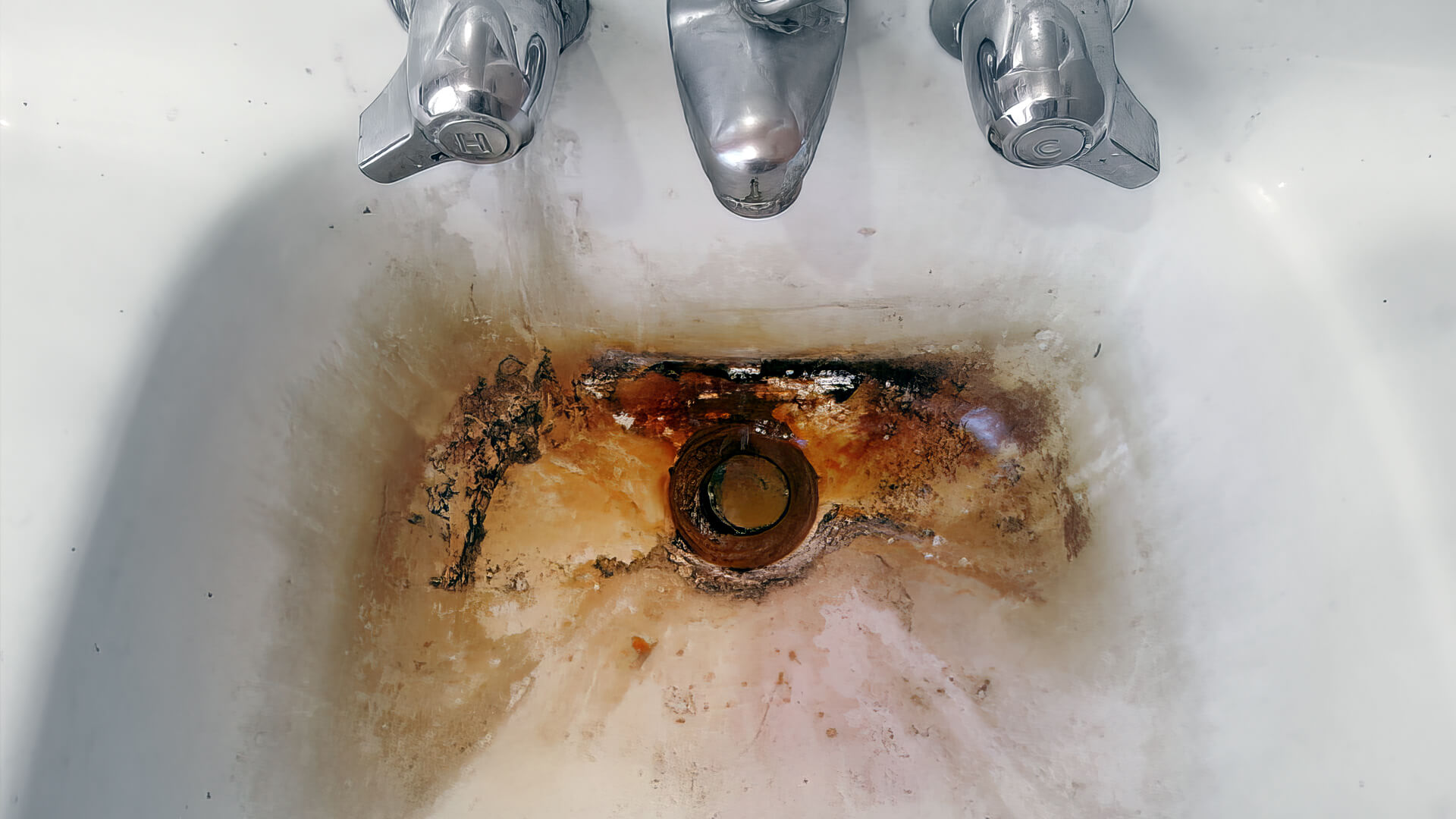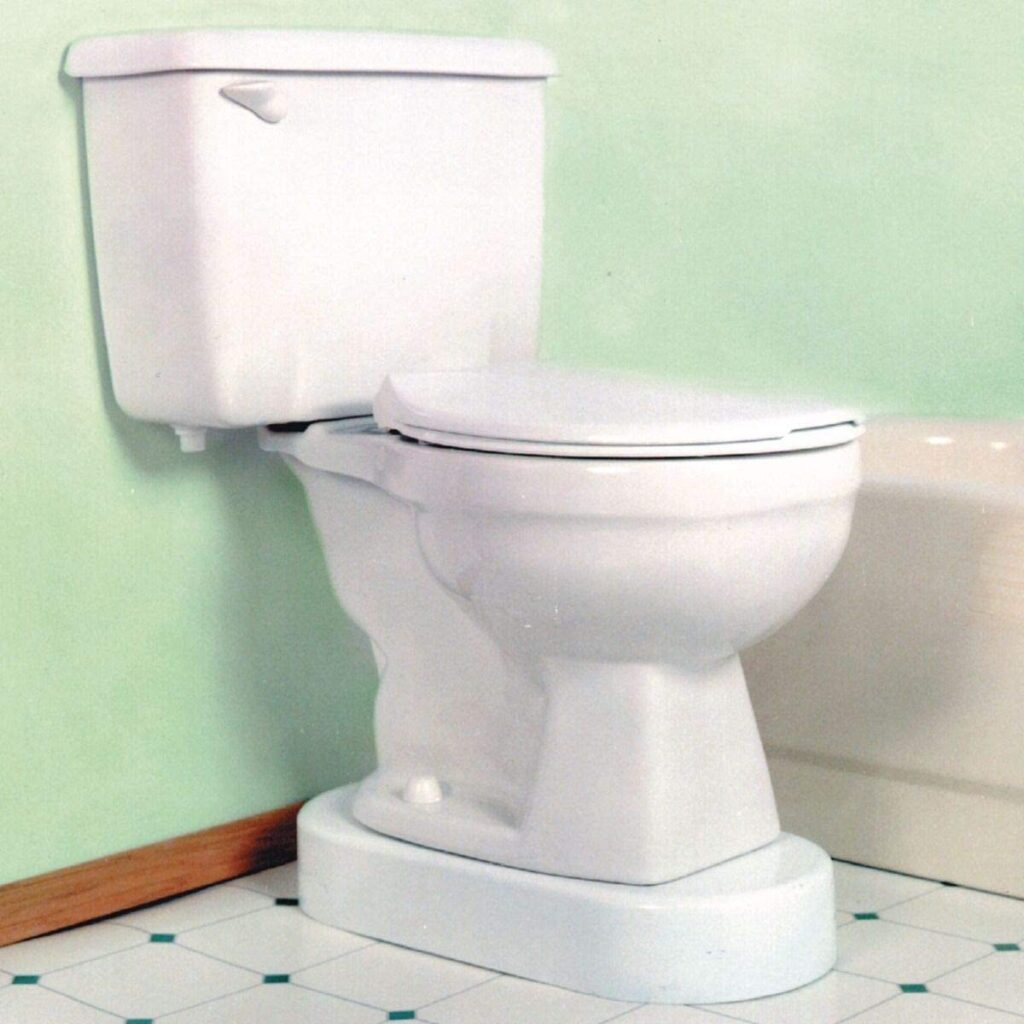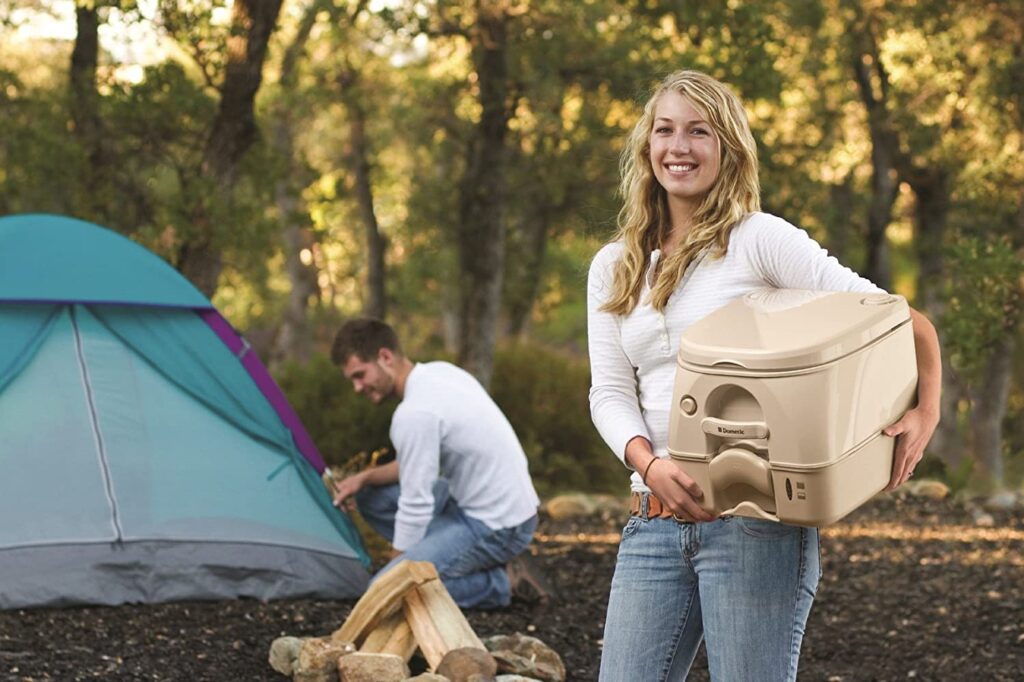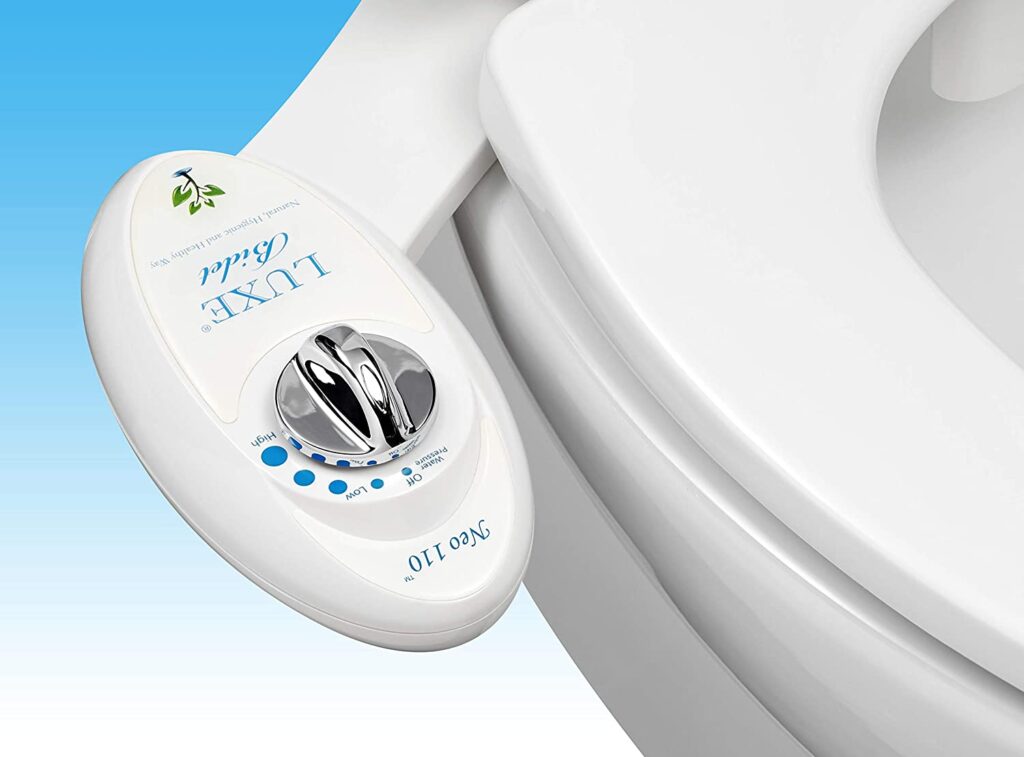Rust stains in your bathroom sink can be frustrating, right? No matter how much you scrub, they seem to stick around, ruining the clean and polished look of your space.
The good news? You don’t have to live with those stubborn stains forever. With the right methods, you can make your sink sparkle again without spending hours or breaking the bank. Imagine walking into your bathroom and seeing a sink so clean it looks brand new.
Feels good, doesn’t it? In this guide, I’ll show you exactly how to remove rust stains quickly and effectively using simple tools and techniques. Whether you’re dealing with minor spots or a more serious stain, you’ll find solutions that work. Let’s dive in and bring your sink back to life!
Table of Contents
Causes Of Rust Stains
Rust stains in bathroom sinks often form due to iron-rich water or corroded plumbing. These stains can discolor surfaces over time. Removing them requires specific cleaning techniques to restore the sink’s appearance.
Rust stains on your bathroom sink can be frustrating and unsightly. They seem to appear out of nowhere, don’t they? But understanding what causes them is the first step to preventing them in the future. Let’s break it down. ###1. High Iron Content In Water
If your home uses well water or water with high mineral content, rust stains could be a regular nuisance. Iron in the water oxidizes when it comes into contact with air and leaves those annoying orange or brown marks. Test your water to check its iron levels—you might be surprised by what you find. ###2. Leaky Faucets Or Pipes
A slow drip from a faucet or pipe can lead to rust stains over time. Water collects around the sink and reacts with metal components, causing discoloration. Have you checked your fixtures recently? Even a tiny leak can leave a big stain. ###3. Metal Objects Left On The Sink
Ever left a shaving razor, nail scissors, or metal jewelry on the sink? That’s all it takes to create a rust stain. Moisture trapped under these items reacts with the metal, leaving a mark behind. Keep metal items off the sink to avoid this common culprit. ###4. Corroding Plumbing Fixtures
Older bathroom fixtures made of iron or steel can corrode over time. This corrosion often runs down the sink, creating streaks of rust. If your fixtures are aging or showing signs of wear, it might be time to replace them. ###5. Hard Water Deposits
Hard water contains minerals that can build up on your sink’s surface. Over time, these deposits can trap particles of iron, leading to rust stains. Do you notice white, chalky spots along with rust? That’s a sign of hard water at work. ###How To Avoid These Causes?
Most of these problems have simple fixes. Regularly clean your sink to prevent stains from setting in. Fix leaks promptly, and test your water quality if you suspect high iron content. A little prevention can save you the headache of scrubbing out stubborn rust later. Understanding the causes of rust stains doesn’t just help you remove them—it empowers you to stop them for good. What’s causing rust in your sink? Identifying the source is the key to a cleaner, stain-free bathroom.
Credit: goldcoastplumbingcompany.com.au
Essential Cleaning Supplies
Rust stains on bathroom sinks can be stubborn but are removable. The key is using the right cleaning supplies. Having the correct tools simplifies the process and prevents damage.
This section will highlight essential items needed for removing rust stains effectively. These supplies are affordable, easy to find, and safe for most surfaces.
1. White Vinegar
White vinegar is a natural cleaning agent. Its acidic properties break down rust stains. It is safe to use and works well on porcelain and ceramic sinks.
2. Baking Soda
Baking soda acts as a gentle abrasive. It scrubs away stains without scratching the sink. It also helps remove odors left behind by rust.
3. Lemon Juice
Lemon juice contains citric acid, which dissolves rust stains. It is eco-friendly and leaves a fresh scent behind. Combine it with baking soda for better results.
4. Soft Scrubbing Pad
A soft scrubbing pad is essential for cleaning rust stains. It provides enough friction to remove stains without damaging the sink surface.
5. Microfiber Cloth
Microfiber cloths are great for wiping away residue after cleaning. They are absorbent and leave the sink looking polished. Always use a clean cloth for best results.
6. Gloves
Protect your hands with gloves during cleaning. Some cleaning agents may irritate the skin. Choose durable gloves for comfort and safety.
7. Water Spray Bottle
A spray bottle filled with water helps rinse the sink. Use it to remove cleaning products and loosened rust particles quickly.
Natural Cleaning Methods
Rust stains on your bathroom sink can be frustrating. But you don’t need harsh chemicals to remove them. Natural cleaning methods are safe, effective, and budget-friendly. With simple items from your kitchen, you can make your sink look clean again. Let’s explore two easy techniques using natural ingredients.
Using Baking Soda And Vinegar
Baking soda and vinegar are powerful natural cleaners. First, sprinkle a generous amount of baking soda over the rust stains. Then, pour a small amount of vinegar onto the baking soda. You’ll notice a fizzing reaction as the two ingredients combine. Let this mixture sit for 10-15 minutes. This helps break down the rust.
After waiting, use a soft sponge or cloth to scrub the stains. Be gentle to avoid scratching the sink’s surface. Rinse with warm water to remove any residue. Repeat the process if stains remain. This method works well for mild to moderate rust stains.
Lemon Juice And Salt Mixture
Lemon juice and salt are another natural way to remove rust. Start by sprinkling salt over the stained area. Then, squeeze fresh lemon juice onto the salt-covered stains. The acid in the lemon helps dissolve the rust.
Let the mixture sit for 15-20 minutes. The longer it sits, the better it works. Afterward, gently scrub the area with a sponge or soft brush. Rinse thoroughly with warm water. This method is effective for light rust stains and leaves a fresh scent.

Credit: www.youtube.com
Commercial Cleaning Products
Rust stains on your bathroom sink can look unpleasant and stubborn. Commercial cleaning products are a fast and effective way to tackle this issue. These products are specifically designed to break down rust and restore your sink’s shine. Choosing the right product and using it safely is crucial for the best results.
Choosing The Right Rust Remover
Not all rust removers are the same. Some are designed for specific materials like porcelain or stainless steel. Read the product label carefully before purchasing. Look for a cleaner labeled safe for bathroom fixtures. Avoid harsh cleaners that could damage the sink surface.
If you prefer eco-friendly options, some rust removers use natural ingredients. These are safer for the environment and work well for light stains. For deeper stains, a stronger chemical-based cleaner may be necessary.
Safety Precautions For Chemical Cleaners
Always prioritize safety when using chemical cleaners. Wear rubber gloves to protect your skin from irritation. Ensure the bathroom is well-ventilated to avoid inhaling strong fumes. Open a window or turn on the exhaust fan before starting.
Follow the instructions on the product label carefully. Never mix rust removers with other cleaning products as this can release harmful gases. After applying the cleaner, rinse the sink thoroughly with water. This removes any residue that could damage the sink over time.
Step-by-step Cleaning Process
Rust stains can make your bathroom sink look old and dirty. Removing them is easier than you think with the right steps. Follow this guide to clean your sink and restore its shine.
Preparing The Sink
Start by clearing out the sink area. Remove soap dishes, toothbrush holders, and other items. This ensures you have enough space to work. Use a dry cloth to wipe away dust or loose debris. Wearing gloves can protect your hands from cleaning chemicals.
Applying The Cleaning Solution
Choose a rust remover or natural solution like baking soda and vinegar. Sprinkle baking soda over the rust stain and spray vinegar on top. Let the mixture sit for 10–15 minutes to break down the rust. Use a soft-bristle brush to scrub gently in circular motions. Avoid using harsh brushes as they may scratch the sink surface.
Rinsing And Drying
Rinse the sink thoroughly with clean water to remove residue. Make sure no cleaning solution is left behind. Use a soft towel or microfiber cloth to dry the sink completely. This helps prevent water spots and keeps the sink looking polished.

Credit: www.youtube.com
Preventing Future Rust Stains
Rust stains in your bathroom sink can be a frustrating sight. The good news is, with a few proactive steps, you can keep those stubborn stains from coming back. Prevention is always better than scrubbing endlessly. Let’s dive into two effective strategies to stop rust stains from reappearing.
Regular Maintenance Tips
Regular cleaning is your first line of defense against rust stains. Don’t wait for visible grime to build up. Wipe down your sink with a damp cloth and mild cleaner at least once a week. This prevents mineral deposits that can lead to rust.
Check for leaks, especially around the faucet and pipes. Small drips often go unnoticed but can leave behind iron deposits that turn into rust stains over time. Fixing leaks early saves you from bigger problems later.
Keep an eye on your water quality. Hard water, rich in iron, is a major culprit behind rust stains. Consider using a water softener or a simple water filter attachment on your faucet. Small upgrades like this can make a big difference in preventing stains.
Installing Rust-resistant Fixtures
Did you know some faucets and drains are more prone to rust than others? Opt for fixtures made from rust-resistant materials like stainless steel, brass, or plastic. They last longer and save you from constant cleaning.
Make sure your sink’s drain stopper and surrounding components are also rust-resistant. Even a tiny rusted part can stain your entire sink. Look for products labeled as “corrosion-resistant” when shopping for replacements.
Think about upgrading to a sink with a protective coating. Many modern sinks come with finishes that resist stains and rust buildup. It’s an investment that pays off in the long run, especially if you’re tired of battling those rusty spots.
Are you ready to say goodbye to rust stains for good? Consistent maintenance paired with smart fixture choices can save you time and effort. Start small with these tips and watch your bathroom sink stay spotless longer!
Frequently Asked Questions
How Do I Get Rust Off My Bathroom Sink?
Remove rust by scrubbing with baking soda and water paste. Rinse thoroughly and dry to prevent further rust.
Will Vinegar Remove Rust From The Sink?
Yes, vinegar can remove rust from a sink. Apply white vinegar to the rusted area, let it sit, scrub gently, and rinse.
What Is The Best Rust Stain Remover For Bathrooms?
The best rust stain remover for bathrooms is Iron OUT. It effectively removes rust stains from tiles, sinks, and toilets.
How To Remove Rust Stains From A Bathroom Countertop?
Mix baking soda and water to form a paste. Apply it to the stain and scrub gently. Rinse with water. For tougher stains, use white vinegar or a rust remover. Always test on a small area first. Keep the countertop dry to prevent future rust stains.
Conclusion
Rust stains on bathroom sinks can be stubborn but are easy to handle. Regular cleaning and quick action prevent stains from setting in. Use natural or store-bought cleaners based on what works best. Always test products on a small area first to avoid damage.
Staying consistent with maintenance keeps your sink looking fresh and clean. With these simple steps, you’ll save time and effort in the long run. Say goodbye to rust stains and enjoy a spotless bathroom sink every day!






